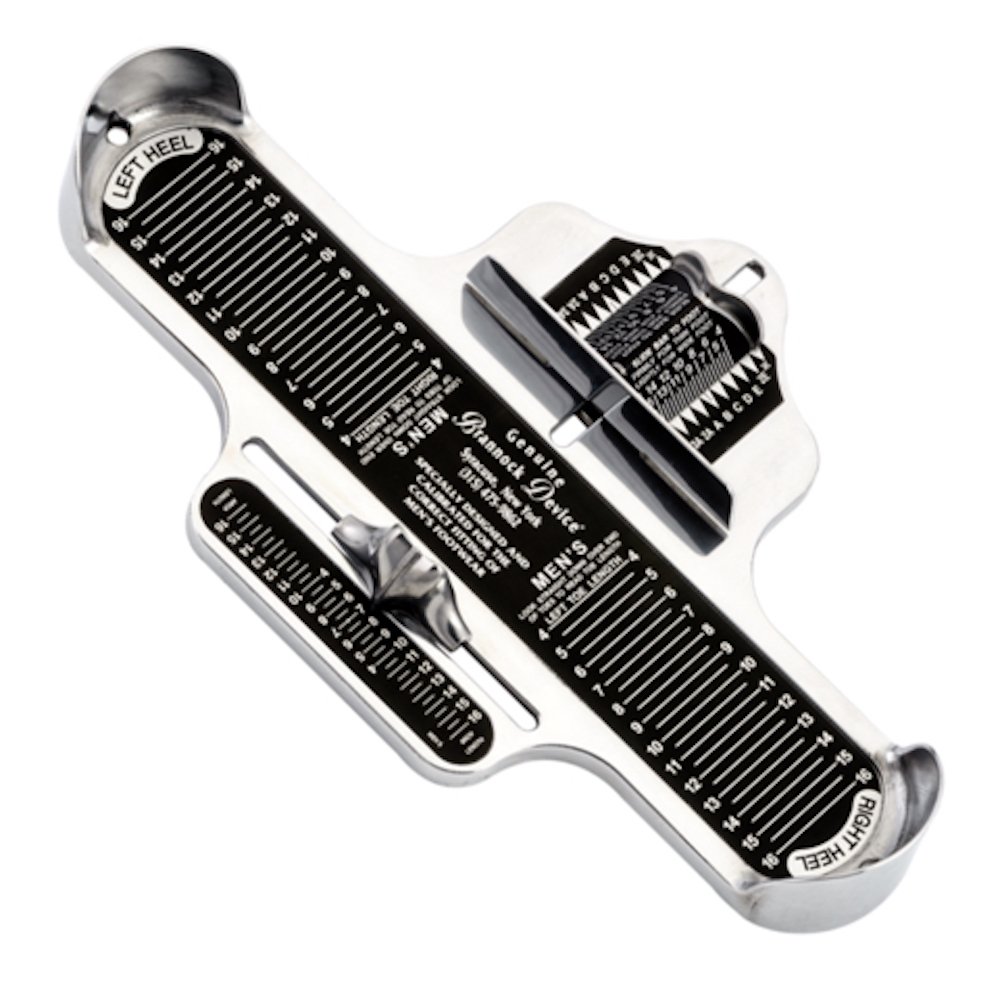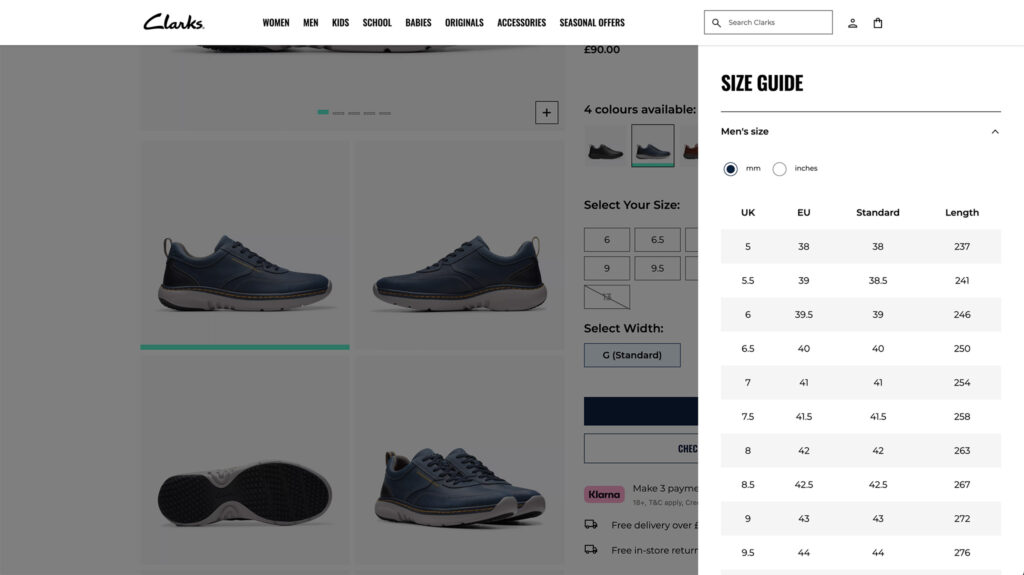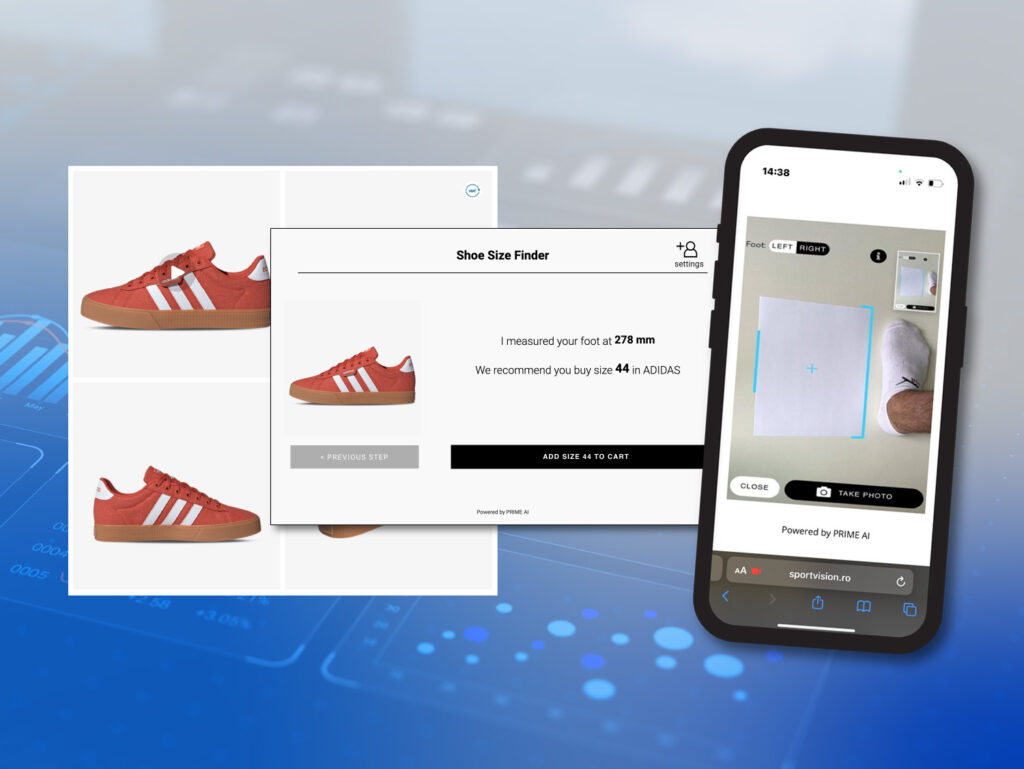The Importance of Proper Fit
Wearing ill-fitting shoes can lead to a host of problems, from minor discomforts like blisters to more serious foot conditions such as bunions, plantar fasciitis, and ingrown toenails. Over time, shoes that don’t fit well can even contribute to long-term issues like joint pain and back problems, due to improper support and misalignment. A shoe that fits well isn’t just about comfort—it’s about maintaining your overall foot health and preventing these potentially serious complications.
Traditional Measurement Methods
The Brannock Device: A Trusted Tool for Accurate Foot Measurement
The Brannock Device, a staple in shoe stores since the 1920s, remains the gold standard for foot measurement. It accurately measures both foot length and width, offering a comprehensive size guide. However, it’s less accessible for home use, which limits its practicality for most people.

Measurement Challenges:
- Availability: While common in shoe stores, Brannock Devices are rarely found in homes, making it difficult for consumers to measure their feet accurately between store visits.
- Operator Error: Proper use of the Brannock Device requires training. Inexperienced users may misread the scale or improperly position the foot, leading to inaccurate measurements.
- Static Measurement: The device measures feet in a static, seated position, which doesn’t account for how feet change shape when bearing weight.
- Lack of Depth Measurement: While it measures length and width, the Brannock Device doesn’t account for foot depth, which can be crucial for a comfortable fit.
The Wall Technique: Simple Foot Measurement Method at Home
One of the simplest ways to measure your feet at home is the wall technique:- Place a piece of paper against a wall.
- Stand on the paper with your heel touching the wall.
- Mark the tip of your longest toe on the paper.
- Measure the distance from the wall to the mark.

Measurement Challenges:
- Accuracy Issues: Keeping the pencil perfectly vertical when marking the toe position is hard, potentially leading to overestimating foot length.
- One-dimensional: This technique only measures length, ignoring crucial factors like width and arch height.
- Difficulty in Self-Measurement: It’s nearly impossible to perform this measurement accurately on oneself, necessitating assistance from another person. We may want to mention something about market trend going towards PLUS sizes in clothing so what about those people shopping for shoes, they have no chance to measure their foot by themselves.
- Inconsistent Pressure: The pressure applied to the foot can vary, affecting the accuracy of the measurement.
The Outline Method
Another popular technique involves tracing your foot:- Place your foot on a piece of paper.
- Trace the outline of your foot with a pencil.
- Measure the length from heel to toe and the width at the widest part.

Measurement Challenges:
- Pencil Angle Error: Holding the pencil at anything other than a perfect 90-degree angle to the paper will result in an inaccurate outline.
- Movement During Tracing: Any slight movement of the foot during the tracing process can distort the outline.
- Ignoring Foot Volume: While this method can provide length and width, it doesn’t account for the foot’s volume, which is crucial for a proper fit.
- Inconsistent Pressure: The pressure applied to the foot can vary, affecting the foot’s spread and the outline’s accuracy.
Sizing Charts and Conversions
UK vs EU vs US Sizes
Different regions use different sizing systems. A UK size 8 is not the same as a US size 8 or an EU size 41. To add to the confusion, there’s often a discrepancy between men’s and women’s sizes.Brand Variations
Even within the same sizing system, sizes can vary between brands. A size 7 in one brand might fit like a 6.5 in another. This inconsistency is one of the biggest challenges in finding the right fit, especially when shopping online.
Measurement Challenges:
- Inconsistent Standards: Different regions (UK, EU, US) use different sizing standards, leading to confusion when converting between systems.
- Brand Variations: Even within the same sizing system, there can be significant variations between brands. A size 8 in one brand might fit like a 7.5 in another.
- Men’s vs Women’s Sizes: The difference between men’s and women’s sizing adds another layer of complexity.
- Half Sizes and Width Fittings: Not all brands offer half sizes or width fittings, making it challenging to find the perfect fit even with accurate measurements.
Considerations Beyond Size
Width Fittings
Length isn’t the only important factor in shoe fit. Width is equally crucial, yet often overlooked. Many brands offer width fittings, typically ranging from AA (very narrow) to EE (very wide).Foot Shape
The shape of your foot can significantly impact how a shoe fits. High arches, flat feet, or wide-toe boxes can all affect which styles and brands work best for you.Time of Day
Your feet tend to swell throughout the day, so it’s best to measure them in the evening when they’re at their largest.Tips for the Right Fit
- Measure Both Feet: It’s common for one foot to be slightly larger than the other. Always fit to your larger foot.
- Consider Socks: Measure your feet while wearing the type of socks you’ll typically wear with the shoes.
- Allow for Growth Room: When buying for children, allow about 1-1.5cm of space at the toe for growth
- Check the Fit: Once you’ve got your shoes, do a proper fit check. There should be about a thumb’s width of space between your longest toe and the end of the shoe.
- Try Before You Buy: Whenever possible, try shoes on in person. If buying online, check the return policy.
The Rise of Advanced Measurement Technologies
3D Scanning: A Step Forward
3D foot scanning technology represents a significant leap forward, offering unparalleled precision and accuracy. This method captures both volumetric and surface data, providing a detailed understanding of foot size and shape. However, the equipment costs are high, there is limited portability, and you may still encounter issues with image noise that need to be addressed for optimal precision.Prime AI’s Shoe Size Finder: Solving the Online Shoe Shopping Issue
This is where technologies like Prime AI’s Shoe Size Finder come into play, offering a more precise, consistent, and comprehensive approach to foot measurement. By addressing many of the shortcomings of traditional methods, such advanced solutions are changing the way we shop for shoes online.
Key Advantages of Prime AI’s Shoe Size Finder
- Unparalleled Accuracy: Using advanced image recognition and analysis technology, it provides precise foot measurements with an error margin of under 5mm – equivalent to half a shoe size.
- User-Friendly Experience: The process is remarkably simple, requiring only a single photo of the foot next to an A4 or Letter-size paper, with no need for app downloads or complex equipment.
- Comprehensive Measurements: It captures not just length, but also width and shape, ensuring a more precise fit.
- Intelligent Recommendations: The technology matches foot dimensions to specific shoe SKUs in the retailer’s inventory, even suggesting visually similar shoes if the exact size isn’t available.
- Continuous Learning: The system improves its accuracy over time by learning from sales, refunds, and inventory data.
- Reduced Returns: By providing accurate sizing recommendations, it helps reduce returns by up to 29%, benefiting both customers and retailers.
- Seamless Integration: It integrates effortlessly into any eCommerce platform, making it widely accessible to online shoppers.
Conclusion
Accurately measuring your feet is the first step to finding shoes that fit perfectly and support your foot health. While traditional measurement methods have their challenges, understanding how your feet measure up empowers you to make informed decisions, whether shopping in-store or online. Remember, the correct shoe should feel comfortable from the moment you put it on. Don’t be swayed by the idea that shoes need to be “broken in”—the right fit should feel right straight away. So, grab that measuring tape by all means, trace those feet, or use Prime AI Shoe Size Finder and step confidently into the world of well-fitting shoes. Your feet will thank you!FAQs
It’s completely normal for your shoes to feel a bit tighter as the day goes on. This is because your feet naturally swell throughout the day, especially after standing, walking, or in warmer weather. By the afternoon, your feet are at their largest, so it’s always best to try on shoes or measure your feet later in the day to ensure the most comfortable fit.
The most accurate way to measure your foot size at home is by using the wall technique or the outline method. Simply stand with your heel against a wall, mark the tip of your longest toe on a piece of paper, and measure the distance. For a more precise measurement that also considers width and shape, advanced solutions like Prime AI’s Shoe Size Finder are highly recommended, as they take the guesswork out of the process with just a photo of your foot.
Yes, Prime AI’s Shoe Size Finder is designed to accommodate all foot shapes, whether you have high arches, flat feet, or a wider toe box. By using advanced image recognition technology, it accurately captures your foot’s unique dimensions—length, width, and volume—ensuring a fit that’s tailored specifically to your foot shape, no matter how unique it may be.